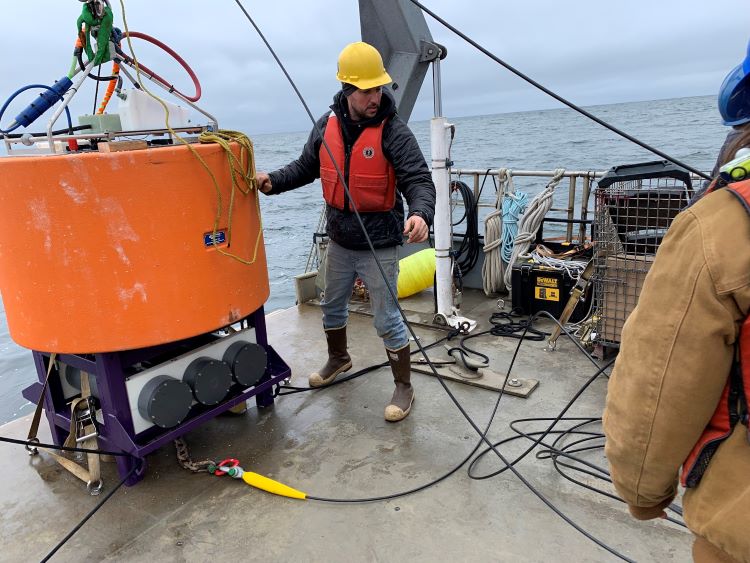
- Transition the ESP mooring program operations to NANOOS for sustained monitoring.
- Bring infrastructure and equipment inventory to sustainable levels and carry out system upgrades to allow the ESP mooring to be deployed in new locations and collect new types of information about food webs and ecosystems using eDNA.
- Identify and prioritize end user data needs to inform the timing and location of the ESP mooring deployments.
- Conduct back-to-back, spring-to-fall ESP mooring deployments to provide early warning of domoic acid events and inform ecosystem assessments.
Funding:
- Year 1: $399,930
- Year 2: $399,951
- Year 3: $399,661
- Total: $1,199,542
Partners:
University of Washington, NOAA NWFSC, Monterey Bay Aquarium Research Institute, Quileute Natural Resources, NOAA NCCOS, NOAA NCCOS & Consolidated Saftery Services, Applied Physics Laboratory & Northwest Association of Networked Ocean Observing Systems
 Official websites use .gov
A .gov website belongs to an official government organization in the United States.
Official websites use .gov
A .gov website belongs to an official government organization in the United States.
 Secure .gov websites use HTTPS
A lock or https:// means you’ve safely connected to the .gov website. Share sensitive information only on official, secure websites.
Secure .gov websites use HTTPS
A lock or https:// means you’ve safely connected to the .gov website. Share sensitive information only on official, secure websites.
